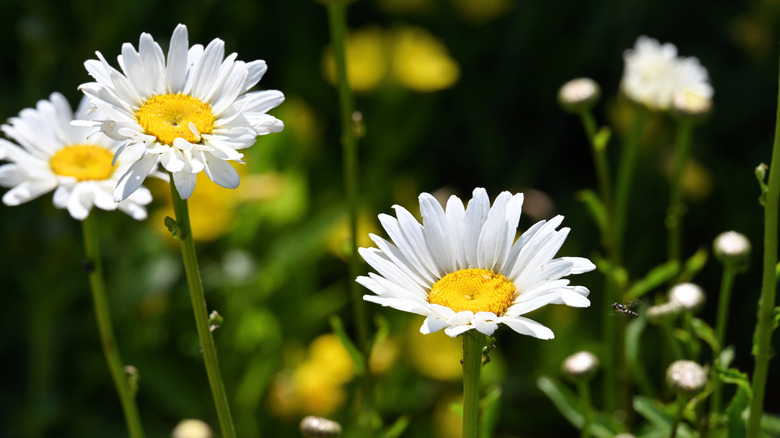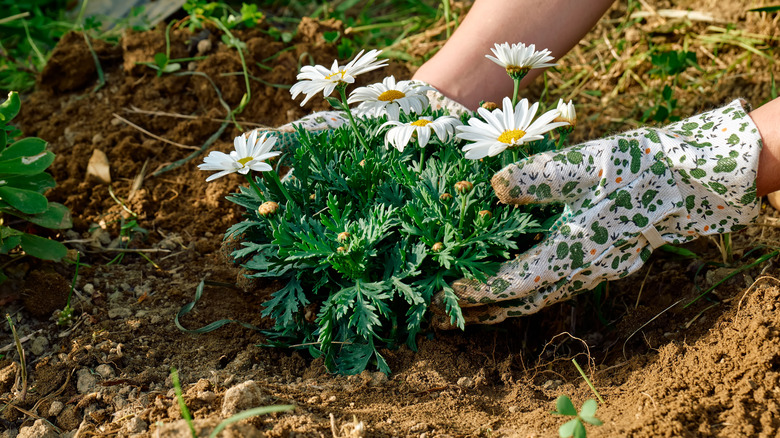Why You Should Grow Shasta Daisies This July
Even if your flower beds are drooping under the July sun, you can still tuck some new growing things into the mix. If you're a fan of Shasta daisies (Leucanthemum x superbum), now is a great time to make them part of your floral team. This stunning daisy variety will fill your garden with pollinators, providing much-needed food for insects and birds into the fall. Planting seeds is always satisfying, but your daisy flowers won't come to light until the following year. If you live in an area with more moderate summer temperatures, now could be a good time to order up some of these cheerful daisies from a nursery. Get them settled in now; with the right conditions and attention, these perennials will put on a show until September and be a lovely part of a cut flower garden.
Shastas are hardy in USDA zones 5 to 9, but if you live in the warmer of these zones, July is probably too late to plant them. Once they're established, Shasta daisies are pretty drought-tolerant. However, in their first few months, make sure plants are watered well while they're getting used to their new surroundings.
Summer planting for Shasta daisies
It's best to set up Shasta daisy plants in your garden in cooler seasons. Early spring or fall is the recommended time to get these plants into outdoor flower beds, since they need a decent amount of time in cooler weather to develop their root system. But if you don't have scorching July temps or have a section in your flower bed with partial sun that is sheltered from the harshest of the rays, it may be worth a try.
Locate a spot in your garden that gets at least six hours of sun per day and has well-draining soil, and add a bit of compost or other organic material. Dig a hole that's twice as wide and a little deeper than the root ball for planting. Once you've added the plant and backfilled the hole, give the base a generous watering. Space your plants between 1 and 2 feet apart, and water them regularly until they're established. After they're established, they'll need just an average amount of water to look perfect in your flower garden.

